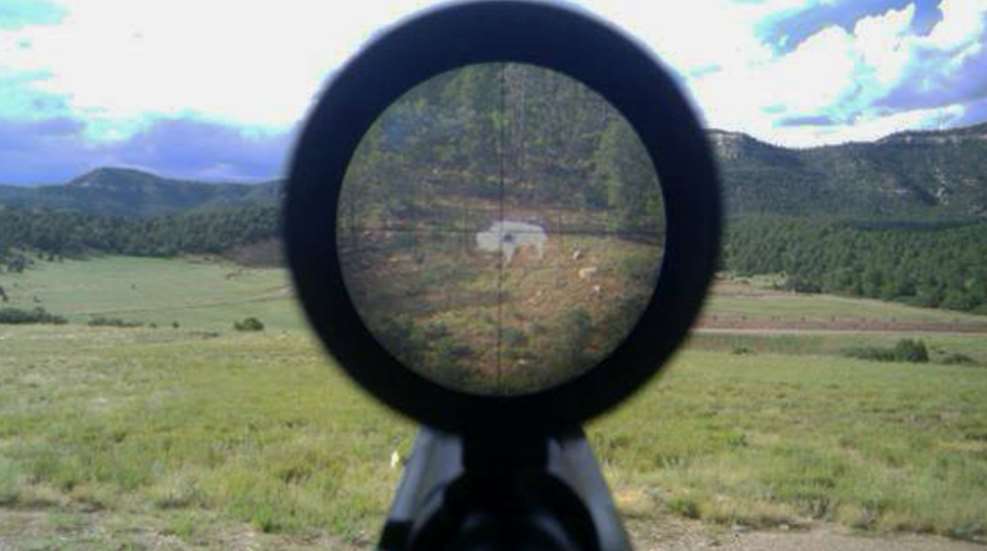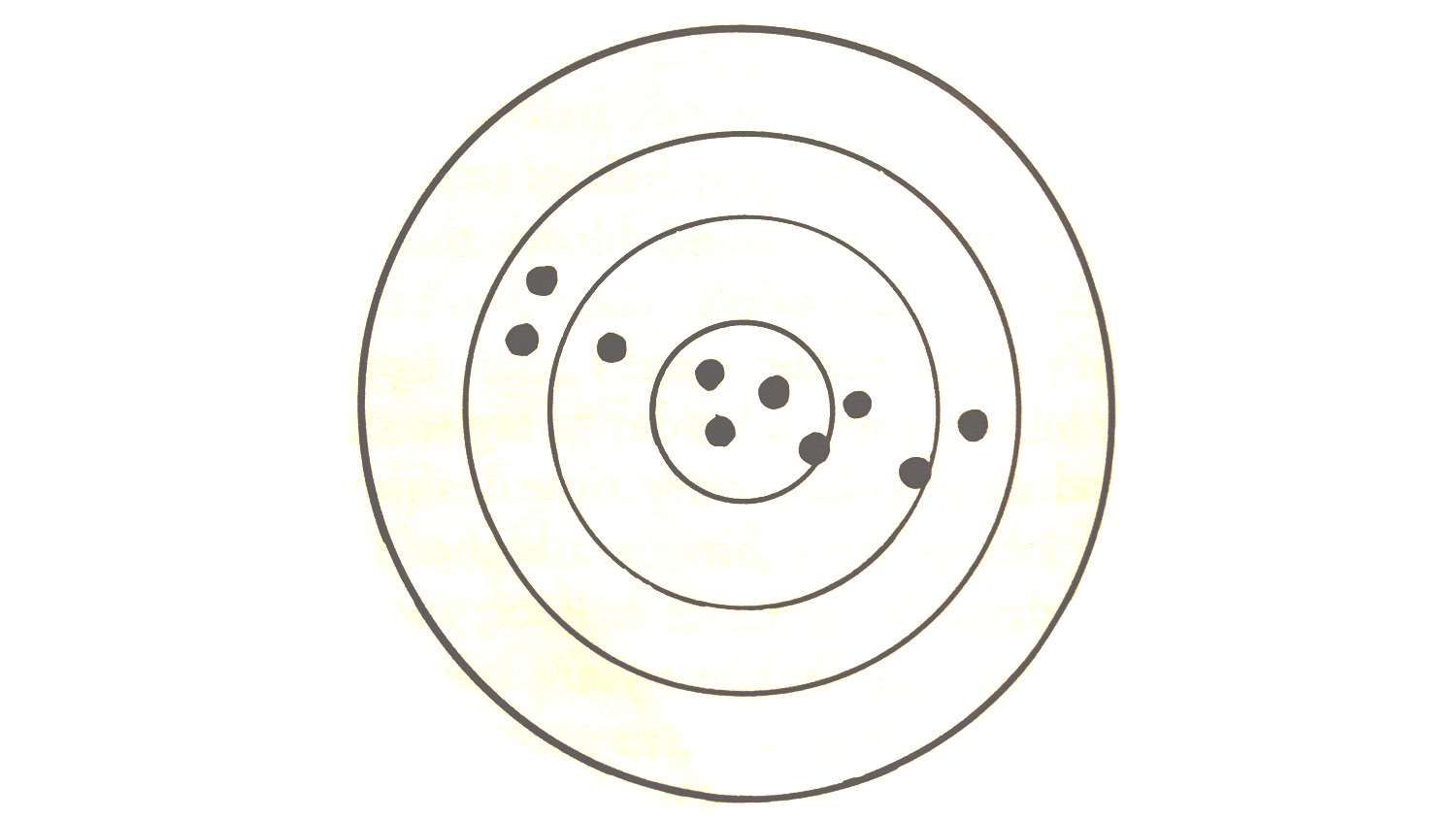
Editor’s note: The 1984 and 1985 NRA National Silhouette Championships included Championship Clinics that were offered to shooters as a means of making the most up-to-date information on silhouette shooting techniques. Our friend who sadly passed away last year, shooting legend Lones Wigger was one of the presenters. The NRA recorded and transcribed the clinics in their entirety, and the information included from these clinics is timeless. Read this excerpt from Mr. Wigger’s contribution to the program below.
Wind and Weather
—Lones W. Wigger
Shooters are affected by the wind in two ways. The first kind of wind blows on you, the shooter, and affects you and your ability to perform well. The second type of wind blows on the bullet and affects the bullet and where it hits down range.
Wind that blows on you and affects your ability to perform will probably become the most important factor you will have to face on a particular day. At that point, the wind that affects the bullet down range becomes a minimal problem. You really don’t worry too much about the effect of wind on the bullet because you are concerned with trying to break the shot so you can make a hit. Being able to break the shot on the target becomes your primary concern.
If you go out to the western U.S. or Canada, you are going to be very concerned with the wind blowing directly on you, since you are not usually protected or sheltered. The wind is going to blow on you, and when it does, you are not going to perform to the best of your ability or shoot at the level you would like.
What can you do when the wind blows on you? What things do you need to take into consideration? Select the power telescope you can handle when the wind blows on you. A variable telescope would be very handy because you could then dial the power you could hold best for the condition that you are shooting in.
When the wind blows on me, I find I have to hang onto the rifle a little tighter. You cannot have a loose position when the wind blows. You have to really force that rifle into your shoulder to control the movement of the reticle so you can hit the target. Your trigger control can also be a bit different when you are shooting in the wind.
When you are shooting in the wind, it is very important to utilize your time properly. I realize that two and a half minutes is not a lot of time. You don’t have time to stand there and wait out your wind conditions, but if you should happen to get a gust, hold up; don’t shoot in it. Try to wait and shoot your shots during the lulls. Usually the wind will blow and then let up, then blow and let up again. If you are ready and looking at your target through your scope, you can shoot that shot when there is a lull or slight break in the wind. That’s the point when your wobble area will be least affected by the wind buffeting you. That’s the time to try to break the shot. Take advantage of your time and the lulls; shoot when the wind is down or low. Use your time constructively.
The second thing I think is very important when shooting in the wind is concentration. I think you have to work harder and concentrate harder when the wind is blowing on you than you do at any other time. If you let up, you have lost that shot.
I’ve been accused of being a good shooter in the wind. I’m not a good shooter in the wind. I don’t think anyone is. I do very well in the wind because half my competition has already quit. As soon as the wind blows they say, “I can’t shoot in the wind,” and they don’t. They don’t try. They don’t work at it. I can’t shoot in the wind either, but I try to take advantage of the lulls and work harder to try to make that shot look just as good as possible every time I shoot. When the match is over, if I have more hits or a higher score than the other guy, it’s because he quite. If half of your competition eliminates themselves like that, you are going to win more matches. It’s all attitude. You have to accept the fact you may only hit two, three or four animals a round; you may not get the nine or 10 hits that you know you are capable of shooting, but it doesn’t make any difference at the end of the day because if you have the most hits, you are the winner. Take what’s there and utilize it the best way you can. Remember, when the wind blows on you, don’t give up; don’t quit. Just try a little harder and work at it. You will be amazed at how well you can do in the wind with a little effort.
Now that we’ve talked about concentration and utilizing your time when the wind blows on you, let’s talk about the wind blowing on the bullet. What happens to the bullet when the wind blows on it? To illustrate, I’m going to use a round target. The animals really are similar targets; they’re just shaped a bit differently.

If you have ever done very much shooting or testing of smallbore ammunition, you know that in the wind your shots usually disperse in groups that form a pattern from 10 o’clock to 4 o’clock (see Illustration 1). When the bullet exits a barrel with a right hand twist, it spins in a clockwise motion toward the target. When a wind comes from the right and bumps the bullet, it causes it to rise. When the wind comes from the left, it pushes the bullet and causes the bullet to drop so it goes to the right at 4 o’clock. Although there may be exceptions, if you look at a set of groups the next time you are testing, you will see that most of them will have a 10 o’clock to 4 o’clock dispersion. This is especially visible at 100 meters where there is a larger dispersion.
Be aware of this when you are making sight changes. A rule of thumb that works pretty well is to take one click of elevation for every three clicks of windage. If you have a wind coming from the left that you think is worth three clicks (¼ minute clicks), take three clicks right and one click up. If you don’t take that click up, you will have corrected for the wind, but your shot will be low. Keep you group centered up.
Head winds and tail winds
A wind that comes form 6 o’clock or 12 o’clock is considered a “no value” wind. By “no value” we mean that the wind has little or no effect on the bullet. Winds that come from 1 o’clock, 2 o’clock, 4 o’clock, 5 o’clock, 7 o’clock, 8 o’clock, 10 o’clock or 11 o’clock, are “half value” winds. A “half value” wind affects the bullet half as much as a full value wind.
I don’t think that 12 o’clock or 6 o’clock winds affect elevation enough to worry about it. We have trouble when the wind is shifting or fishtailing to one side or the other from either 12 o’clock or 6 o’clock. You get a shift that is worth something windage-wise but very difficult to stay on top of because it is changing so fast. In silhouette, it’s almost impossible to keep clicking back and forth. You are trying to shoot and the coach is trying to watch your shots so it’s almost better not to bother with it.
In the smallbore game, where you are shooting at a very small target, it becomes extremely important to stay on top of this type of condition by always trying to shoot with the condition coming from the same side. We try to stay with that condition for the whole match. In silhouette, where the target area is bigger, you probably don’t have to be concerned about a 6 o’clock or 12 o’clock wind.
Mirage and Temperature Fluctuations
I believe that mirage and wind has two effects. The wind blows on the bullet, and the mirage distorts your sight picture.
As for variation in temperature, when I shoot, I zero for the conditions present that day and then shoot the match. If there is a difference in zero, it really doesn’t make a difference since I’m already sighted in for it. I would suspect that higher temperatures make the bullet shoot a little higher.

































